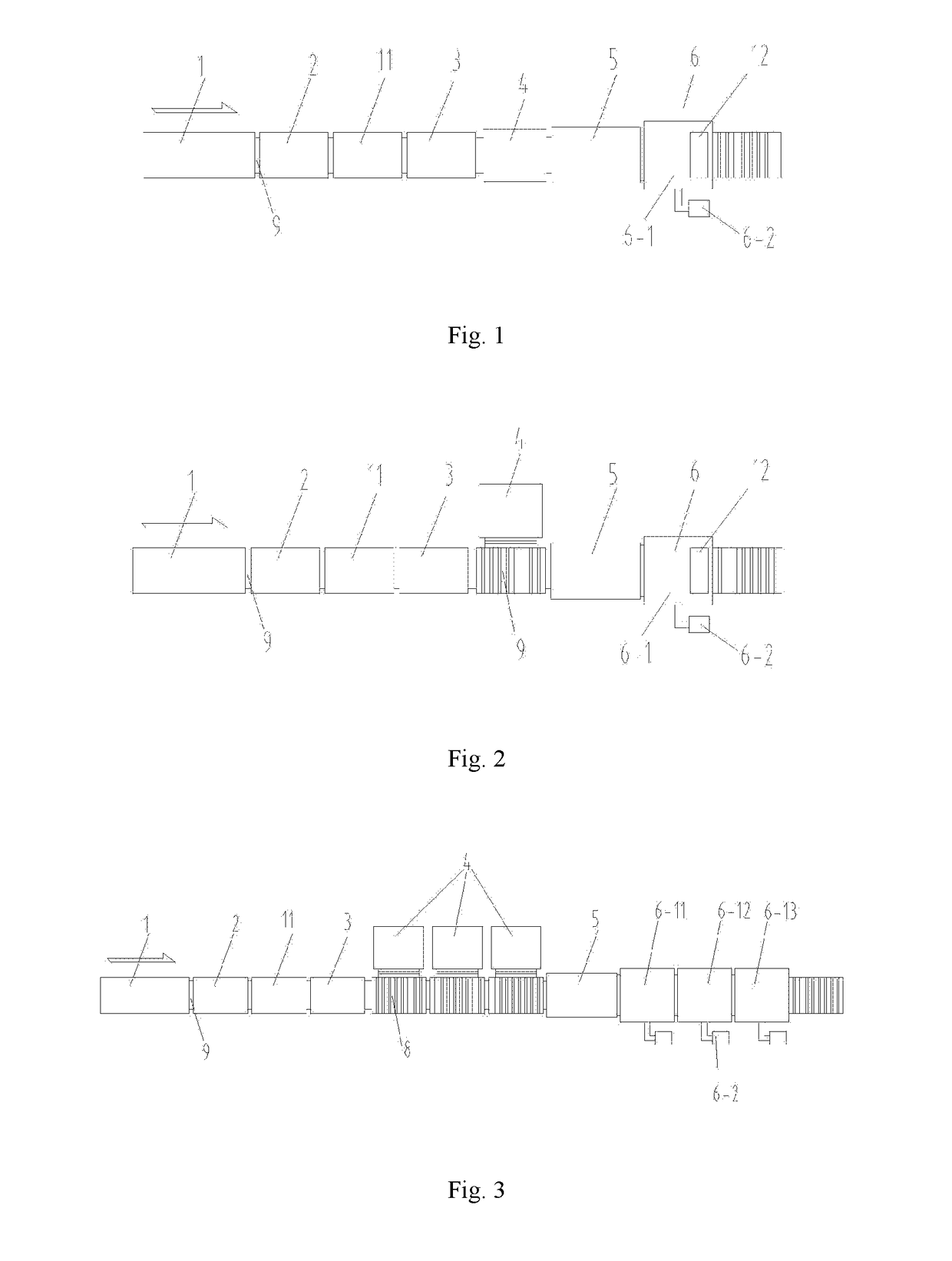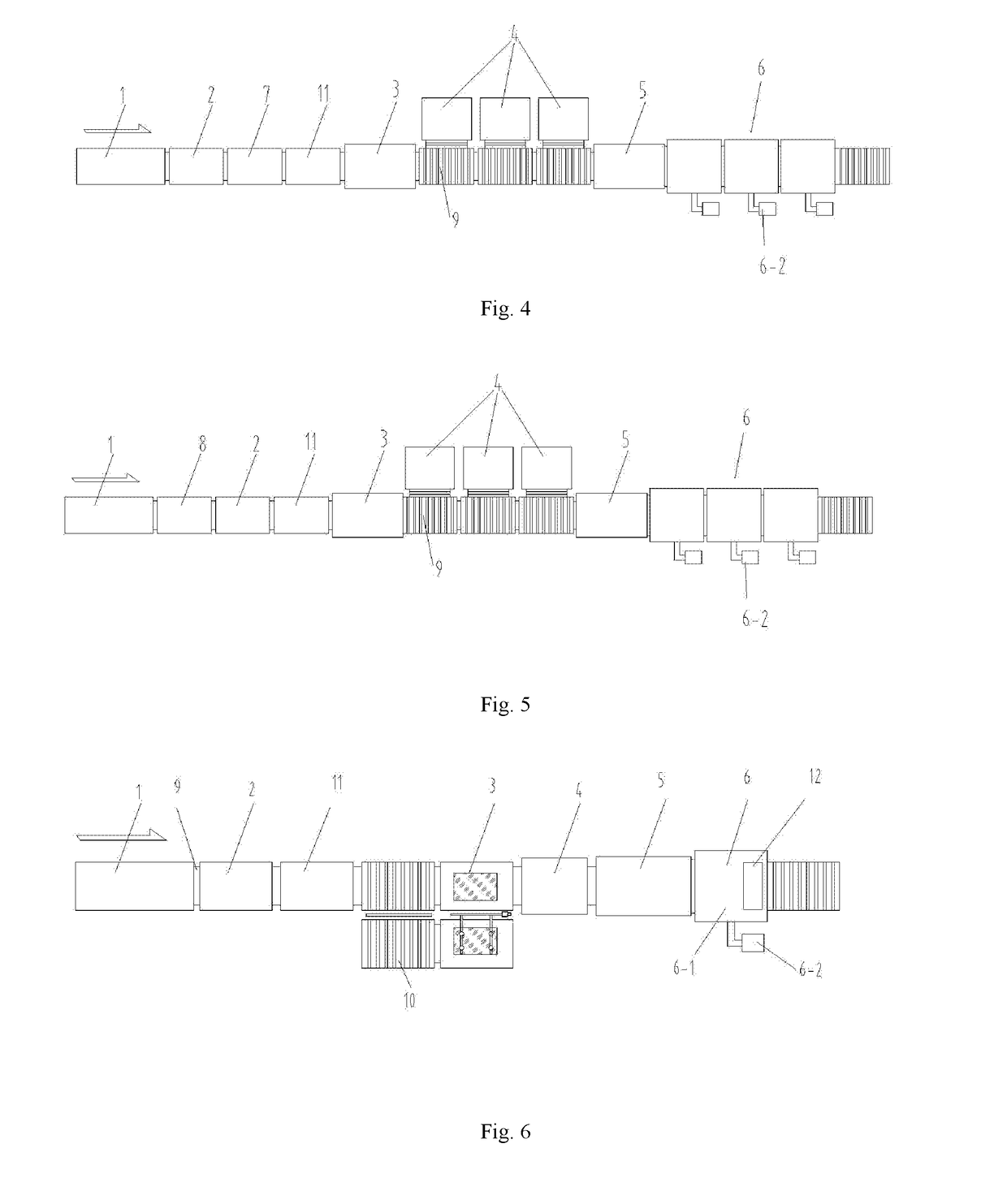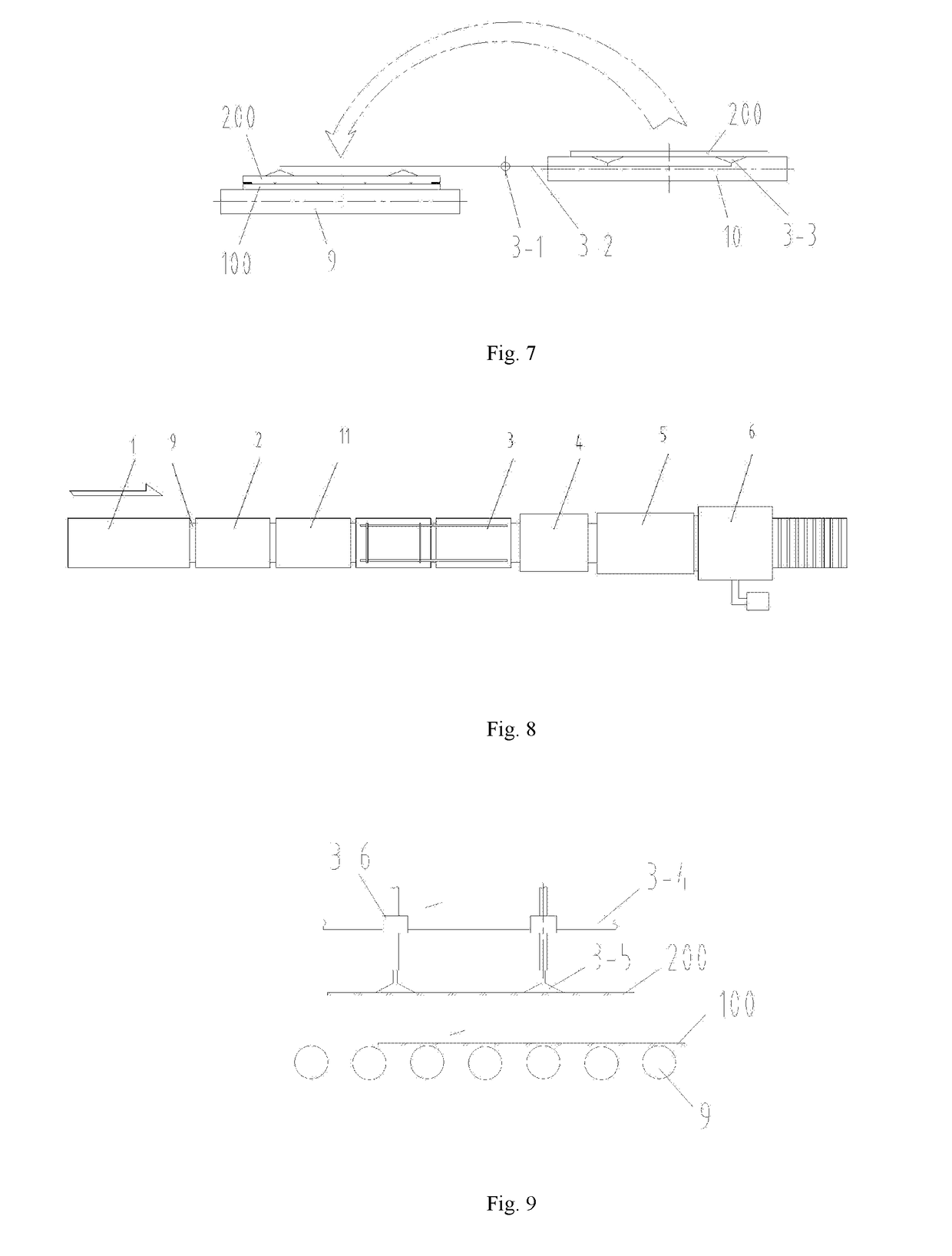Methods for Manufacturing Tempered Vacuum Glass and Production Lines Therefor
- Summary
- Abstract
- Description
- Claims
- Application Information
AI Technical Summary
Problems solved by technology
Method used
Image
Examples
embodiment 1
[0056]FIG. 1 and FIG. 10 show the first specific embodiment of a tempered vacuum glass production line in the present disclosure. In this embodiment, the production line specifically includes a first conveying device 9, e.g., a conveying roller bed, and a metalized layer manufacturing device 1, a solder placing device 2, a first preheating device 11, a superposing device 3, a soldering and edge-sealing device 4, a second preheating device 5, a vacuumizing system 6 and a sealing device 12 which are connected in sequence by a first conveying device 9, wherein the first preheating device 11 is used for heating glass substrates to 60-150° C. before the glass substrates are superposed, and then the soldering and edge-sealing device 4 performs edge sealing treatment; of course, the first preheating device 11 can also be arranged on the next station of the superposing device 3, to heat the overall superposed glass substrates to 60-150° C. The sealing device 12 is arranged in the vacuumizin...
embodiment 2
[0075]FIG. 2 shows a second specific embodiment of a tempered glass production line. This embodiment is substantially the same as embodiment 1 in structure, and the difference lies in that the soldering and edge-sealing device 4 is arranged on one side of the first conveying device 9, a push mechanism arranged on the first conveying device 9 pushes the glass substrate into the soldering and edge-sealing device 4, at the moment, the conveying direction of the soldering and edge-sealing device 4 is perpendicular to that of the first conveying device 9.
embodiment 3
[0076]FIG. 3 shows a third specific embodiment of a tempered glass production line. This embodiment is substantially the same as embodiment 2 in structure, and the difference lies in that the number of the soldering and edge-sealing device 4 is three, and of course, the number of the soldering and edge-sealing device 4 can be increased or reduced according to the working efficiency of each station on the production line; in this way, a plurality of soldering and edge-sealing devices 4 can be arranged on the most time-consuming soldering and edge-sealing process of the whole production line, so that the production efficiency is improved; moreover, the conveying direction of the soldering and edge-sealing devices 4 is perpendicular to that of the first conveying device 9, so that the glass substrate can selectively enter any vacant soldering and edge-sealing device 4. The vacuum chambers 6-1 (see FIG. 2 or FIG. 1) include a front auxiliary vacuum chamber 6-11, a main vacuum chamber 6-...
PUM
| Property | Measurement | Unit |
|---|---|---|
| Temperature | aaaaa | aaaaa |
| Temperature | aaaaa | aaaaa |
| Temperature | aaaaa | aaaaa |
Abstract
Description
Claims
Application Information
 Login to view more
Login to view more - R&D Engineer
- R&D Manager
- IP Professional
- Industry Leading Data Capabilities
- Powerful AI technology
- Patent DNA Extraction
Browse by: Latest US Patents, China's latest patents, Technical Efficacy Thesaurus, Application Domain, Technology Topic.
© 2024 PatSnap. All rights reserved.Legal|Privacy policy|Modern Slavery Act Transparency Statement|Sitemap



